
With a foreboding Beethoven composition lending an incongruously somber air to the proceedings, Ballet Quad Cities' ensemble is rehearsing. The brightly lit studio space finds the 10 company members engaged in all manner of movement during these five minutes of Ludwig van: two male dancers tussling in the foreground; another male skulking in the background; a petite female gliding amongst her fellow dancers and voicelessly addressing one with an accusatory glare.

A quartet of ensemble members collectively lunges and thrusts while, on the other side of the studio, a young woman makes seductive overtures toward one of her scene partners, and, eventually, nearly everyone lines up to gracefully pass a fist-sized, invisible prop from one dancer to another. That's when choreographer Courtney Lyon comes up to me and, regarding the unseen object, whispers, "That's a bottle of poison."
Given that many of the company's recent fall productions have found guest performer Domingo Rubio casually killing dancers in his role as Dracula, the appearance (or, at this moment, non-appearance) of a potential murder weapon in a Ballet Quad Cities endeavor shouldn't raise anyone's eyebrows. What might, however, is the degree of difficulty involved in the company's 2015-16 season-opener Murder Mystery at the Ballet - a world premiere in which, as of that September 21 rehearsal, even its chief creator doesn't know whodunit.
"The story keeps changing," says Lyon of the ballet that will - in a change from her company's norm - run for two weekends (October 9 through 17) instead of one at Moline's Scottish Rite Cathedral. "At first, I thought I knew who was going to die. But then I got about 15 minutes into the choreography and was like, 'No, wait, it's so obvious - it should be this person!' But then I thought, 'Okay, but that means this other person couldn't have killed them ... !' So I'm still not convinced I know who did it, because the story is taking its own path."
In truth, Murder Mystery at the Ballet's patrons may find it a somewhat recognizable path, at least if they're aware of popular Hasbro suspects outfitted in hues of scarlet, mustard, and plum. But her show, Lyon adamantly states, "is not based on Clue. It is 'inspired by a board game.'"
Of course, she says this with a grin, and you can hear the quote marks in her voice ... .
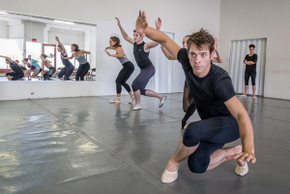 A Fun Approach for the Halloween Season
A Fun Approach for the Halloween Season
Lyon, who serves as Ballet Quad Cities' artistic director under Executive Director Joedy Cook, says that her concept for Murder Mystery at the Ballet came to mind roughly two years ago - and that its exact origin is a mystery of its own. "I seriously have no idea where it came from," she says. "None at all."
From what Lyon recalls, she, Cook, and company Ballet Mistress Margaret Huling were rummaging through clothes in the storage area above the studio - "just kind of sitting amongst our things, looking at hats and pieces of costumes and things like that. We usually plan our seasons a couple seasons in advance, so we were throwing around ideas of ballets that would be really fun or effective. And I just said, 'You know what I think would be really, really cool? If we did a murder mystery.' I don't know why. It just seemed like it would be a fun approach for the Halloween season. Something a bit different."
Cook, however, says that the desire to do something different also stemmed from the company's success with its 2007 presentation Blue River, an original work celebrating Davenport's roaring-'20s jazz scene featuring choreography by Matthew Keefe and live music performed by Josh Duffee & His Orchestra. "People still talk about that show," says Cook. "It was such a fun performance and so new ... . And it really sold."
Then again, over many autumns since 2007, so has Ballet Quad Cities' Dracula, and Lyon and Cook both state that going with an untested fall production instead of Rubio's vampire had nothing to do with tapering ticket sales.
"People are already asking me when it's coming back," says Lyon. "They love Dracula, and there are people who come every year and can't wait to see it again." (Take heart, Domingo Rubio fans: You can also see him in Murder Mystery at the Ballet.)
"But you know," adds Cook, "there are also people who say to me, 'I hope you're not doing Dracula again.' Sales were always good and it's not that we didn't want to do it. This is just something new." And, for Cook, a less financially risky "something new" than full productions of ballets such as Swan Lake and Giselle.
 "Quite honestly, they probably wouldn't sell here" says Cook of those famed works. "Although Act II of Giselle is one of my very favorite ballets of all time, I don't know if I'll see Ballet Quad Cities perform that in my lifetime.
"Quite honestly, they probably wouldn't sell here" says Cook of those famed works. "Although Act II of Giselle is one of my very favorite ballets of all time, I don't know if I'll see Ballet Quad Cities perform that in my lifetime.
"But I think we really know our niche now," she says of the traditional company season that progresses from autumnal vampires/killers to December's The Nutcracker to mid-winter's Love Stories vignettes to spring's balletic fairytales to June's presentations of Ballet Under the Stars, most of them clocking it at 90-ish minutes. "We're finding our market, and even in terms of the length of performances, I think we really do understand just how long we can keep somebody's attention - how long they can sit and enjoy the work we're doing. It's taken a long time, but it's a really exciting time."
Meanwhile, Lyon says she was excited about her potential project from the moment the murder-mystery theme came to her. "My brain just started to explode thinking of the possibilities," some of which, yes, fine, did stem from Clue - or at least the italicized Clue.
"That was the jumping-off point," she admits. "Actually, it was the movie version from the '80s, the cult classic - that's one I saw a lot growing up. But what I was thinking about it were the characters. That movie has really strong archetypes, and the same thing can be true for dance. And I just thought, 'Wouldn't it be fun to create dance characters who are those same sorts of strong archetypes, and give them all a reason to come together, and see what happens?'"
With a half-embarrassed smile, Lyon adds, "I was also thinking a little bit of my favorite, Angela Lansbury, in Murder, She Wrote. I kind of have her as my guide ... but no one really needs to know that ... ."
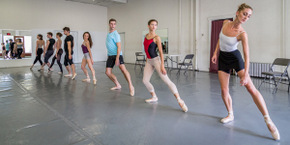 One Detective, One Boddy
One Detective, One Boddy
Unlike Clue's dinner-party scenario, the storyline Lyon devised for Murder Mystery at the Ballet opens, appropriately enough, at the ballet.
"What happens," she says, "is that we have an international director/producer [played by Rubio] who has this big premiere of a new show he's been working on. We also meet a detective [portrayed by the choreographer's husband, dancer/actor Jacob Lyon]. We see him going to the theatre for the ballet premiere. But then at some point during the ballet, someone gets murdered."
(Lyon is mum on which of her dancers bites the dust, but it should be noted that the Murder Mystery poster does promote Rubio's "cameo appearance," and the program will reveal his character name to be "Alucard Boddy," which might be telling. He also appears very well cast in the role - at least if you read the character's first name backward.)
Following the unexpected death, says Lyon, "all the characters are taken down to the police station to be questioned. And that's when you really see our ballet," as opposed to the show-within-a-show ballet, "because the whole performance is really done in flashback, and shown from everyone's individual perspective.
"For instance," she continues, "the detective will be interviewing someone - like Marie Buser, who's one of our dancers. She'll say to him, 'Well, I don't know if it's important, but I did see this ... .' And while she tells him what she saw, the audience will see that moment danced out on-stage. And that'll happen over and over.
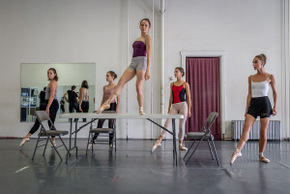 "We might see an argument, or we might see a love pas de deux. We might notice, 'Well, that person's not on-stage now ... that person is on-stage now ... that person looks suspicious ... .' We won't know exactly what everything means, but we'll try to figure out clues based on those flashbacks. And at the end, after everyone's kind of accused each other and the detective figures out how the murder happened, he'll put all those vignettes in their right order, and condense things, and add props, and the audience will know who did it. It'll be a three-minute version of what actually happened."
"We might see an argument, or we might see a love pas de deux. We might notice, 'Well, that person's not on-stage now ... that person is on-stage now ... that person looks suspicious ... .' We won't know exactly what everything means, but we'll try to figure out clues based on those flashbacks. And at the end, after everyone's kind of accused each other and the detective figures out how the murder happened, he'll put all those vignettes in their right order, and condense things, and add props, and the audience will know who did it. It'll be a three-minute version of what actually happened."
Complicated though all that may sound, it's really the formula for many, many murder mysteries ranging from Agatha Christie to Angela Lansbury. There is, however, one crucial, intensely challenging difference: This being a ballet, all of the stage action unfurls without any spoken dialogue. At least for now.
"I potentially might have a voice-over to help guide the audience," says Lyon. "But no, none of the characters will be speaking." And in a genre in which suspected figures are known to speak frequent untruths, that might actually simplify things for patrons hoping to figure out whodunit.
"You get to watch body language, and details from people's movements, and figure out what you think you're seeing them do. Someone's yelling - what does that mean? Someone's missing from the group - what does that mean? I really believe that ballet, or dance in general, can be as effective a communication tool as words. And what's really cool about dance is that sometimes you can express things that you can't with words - that go beyond words. So by intermission, the audience will probably already have picked out who they think has done it - not based on any special information they've been given, but based on how they see people acting with each other.
"Of course," Lyon says with another grin, "after intermission they might totally change their minds ... ."
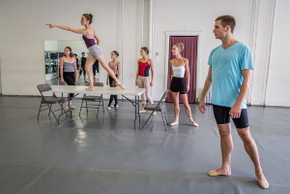 A Very Organic Process
A Very Organic Process
While some of Murder Mystery at the Ballet's characters (see "The Unusually Graceful Suspects" below) may be reminiscent of those from the board game and movie, there are a few fundamental differences between Clue and Lyon's not-Clue. For one thing, audiences won't be asked to guess which room the murder took place in, or which of a half-dozen weapons was used to pull it off. And crucially, unlike the board-game possibilities and famed trio of alternate climaxes from Clue's theatrical release, there's only one killer.
"I feel like there's potential to do anything with this story," says Lyon. "But to make it easier for an audience to understand, and for them to get the most enjoyment from it, no, I'm not going to do a million different endings." Especially when, as the choregrapher says, finding even one is proving tough enough.
"As I get to know more about each of the characters," she says, "they're really coming alive to me. And while I get to know them, I'm slowly figuring out, 'Oh, this person really could've done it ... !'"
Describing the rehearsal process, Lyon says, "There are big scenes where we're all working together - where they're dancing as a group and I'm choreographing on the group - where there isn't a tremendous amount of time to have a dialogue about what's going on in the moment. But then, afterward, we talk about it - how the dancers can inform their movement, and insert their characters' own personal, physical characteristics into the dance scene I've put on them.
"And then when I'm creating some of the small flashback vignettes, we really do talk about 'What do you think your characters would do now?' And then they'll play off each other and react off each other, and once we've created the choreography, we find music for it. It's a very organic process."
The task of finding appropriate music is, Lyon says, "one of the really fun parts. I spent a lot of time amassing a bank of music that I thought was really, really great, and I knew that when I began working with the dancers and forming the story, I would find the right piece of music to attach to each character.
 "So I'm using a lot of classical music," she continues. "We have Beethoven, I think I've found a Debussy piece that I like ... . I'm still finding things and it isn't all set, but it's really cool to hear how these classical composers can help set a mood for any time period. This show is set in the present, but the classical music works so well."
"So I'm using a lot of classical music," she continues. "We have Beethoven, I think I've found a Debussy piece that I like ... . I'm still finding things and it isn't all set, but it's really cool to hear how these classical composers can help set a mood for any time period. This show is set in the present, but the classical music works so well."
It should also provide potential clues for, as Lyon says, "audiences with musical intelligence." In another of the rehearsal scenes I watched on September 21, dancers Jill Schwartz and Branson Bice performed a slow, sensual pas de deux. But the lithe, hungry beauty of the dance was (intentionally) mitigated by edgy and morbid undertones, considering that Schwartz and Bice were dancing to Mozart's haunting Requiem Mass in D Minor - the music that, as we Amadeus fans know, accompanied Mozart's funeral and the subsequent, ugly dispatching of his body.
"Some of the pieces will be familiar to people," says Lyon. "Maybe they won't be able to put their finger on exactly where they heard them, but they'll get a sense of atmosphere from them. The music helps drive the characters."
As do the dance styles employed. "It's all over the place," says Lyon of her choreography. "Our ingénue, for example, is a little more proper than the others, so hers are more 'classical ballet' dances. Our thrill-seeking, 'destroyer' character is almost breakdancing at some points - really throwing himself all over the stage. So both the movement styles and the music are helping to define each character."
All Lyon needs now is a killer. But she's not worried. "When I was just abstractly coming up with all these concepts," she say, "it was very difficult. But once I get my dancers in front of me, you see what works, you see what reads, you see what doesn't, and it all starts making sense."
Another grin. "Unless one of the characters is lying."
Murder Mystery at the Ballet will be performed at the Scottish Rite Cathedral (1800 Seventh Avenue, Moline) on October 9, 16, and 17 at 7:30 p.m., and October 10 at 2:30 p.m. Those seeking clues in advance are also invited to visit the production's sponsorship partners - Barley & Rye, Bass Street Chop House, Cafe Fresh, Cool Beanz Coffeehouse, Cup a Jo, La Flama, and Le Mekong - to pick up secret information on the ballet's roster of suspects.
For more information and tickets, call (309)786-3779 or visit BalletQuadCities.com.
----------------------------------------------
The Unusually Graceful Suspects
Want some inside scoop on the who-might've-dunits in Ballet Quad Cities' whodunit? Familiarize yourself with the following mug shots for Murder Mystery at the Ballet's dancing suspects, with character commentary provided by choreographer Courtney Lyon. Any resemblances to figures from the board game Clue are wholly, completely, entirely coincidental.
 Joseph Flickner
Joseph Flickner
a.k.a. Clark Newbie
Signature color: green
"He's the new kid in the [show's] ballet company - a big dreamer who wears his heart on his sleeve, and has a romantic interest in the company's new leading lady. He's your average Joe, very sweet."
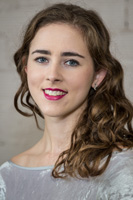 Kayleigh Danowski
Kayleigh Danowski
a.k.a. Betsy Boetjes
Signature color: mustard
"She's the new leading lady in the company - the ingénue, the innocent, and the object of Clark Newbie's romantic intentions. She's kind of like a Disney princess."
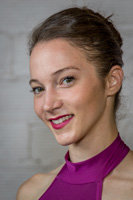 Emily Kate Long
Emily Kate Long
a.k.a. Stella O'Hara
Signature color: scarlet
"She's the former leading dancer of the company. She's used to having it all and getting what she wants, and she's able to manipulate people into giving her what she wants."
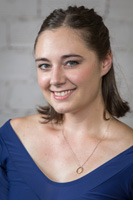 Jill Schwartz
Jill Schwartz
a.k.a. Victoria Snow
Signature color: white
"She's a woman of mystery. Actually, she's a Russian spy who's undercover in the ballet company. She doesn't speak English, so no one knows her very well, and she kind of lurks around in the background."
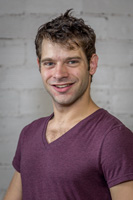 Branson Bice
Branson Bice
a.k.a. Julian Grape
Signature color: plum
"He's the loner, the thrill-seeker, the rebel, the destroyer. We also come to find out that he's connected with Victoria Snow, and those characters are secretly working together."
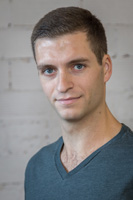 Patrick Green
Patrick Green
a.k.a. Frederick Phoenix
Signature color: peacock blue
"He's a type-A personality, a perfectionist, prone to anger and outbursts. He's dating Stella O'Hara. And that's all anybody really knows about him."










